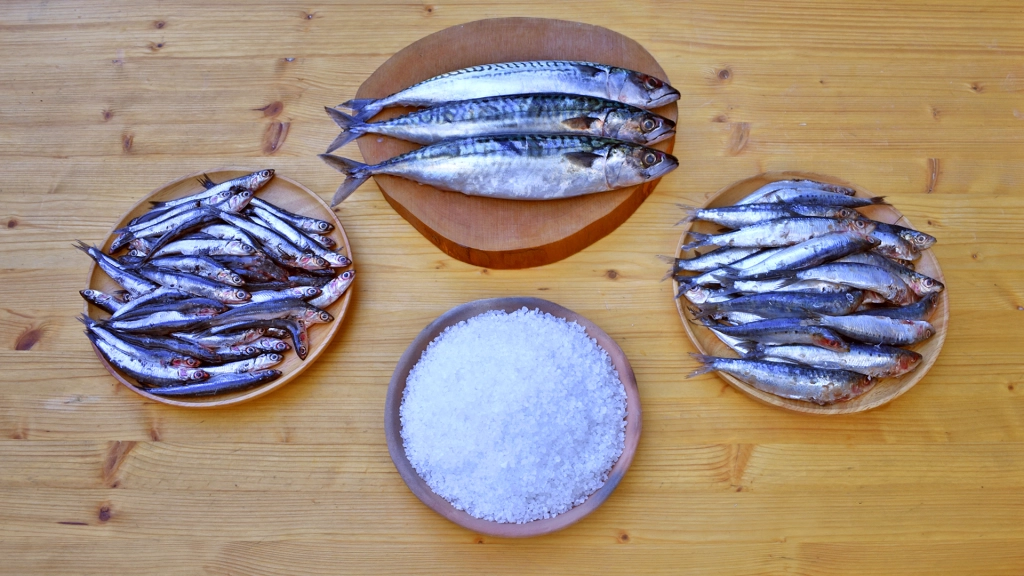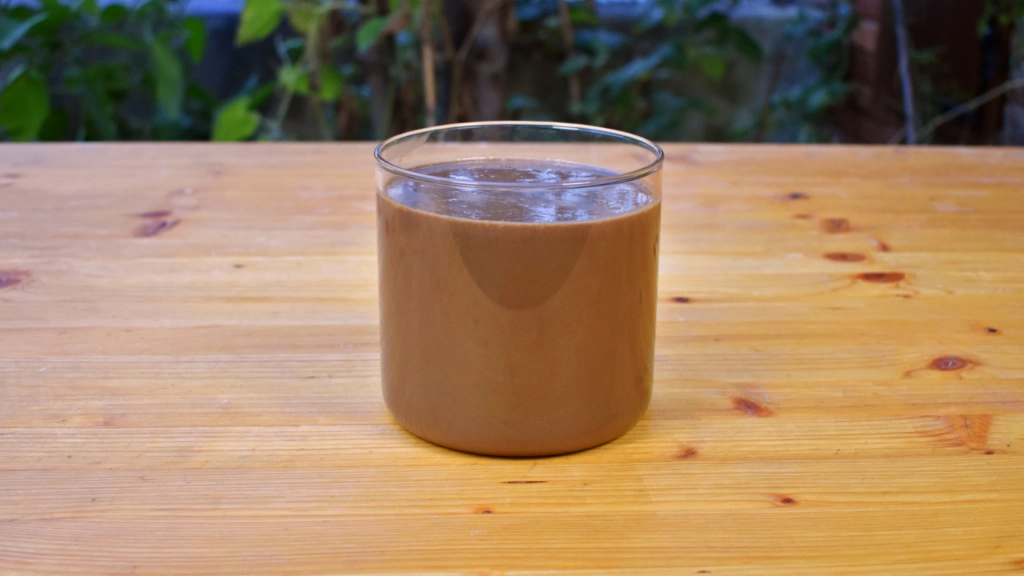Garum is a term that refers to several kinds of fish sauces very popular in the ancient Mediterranean countries, whose fortune continued during and beyond the Middle Ages. In the territories of the former Western Roman Empire, indeed, ancient garum was surely produced at least until the 8th century, whereas in the Eastern part of the empire its use continued even after the fall of Byzantium.
Arabic murri, a term related with Greek almuria and Roman muria (the liquid obtained by salting fish), was produced with cereals or fish, and some kinds of murri seem quite similar to oenogarum, one of the many typology of garum. Between the 13th and the 14th century, the Italian physician Matteo Silvatico writes in the Opus Pandectarum Medicina that muri and garus are the same (garus vel muri vel almuri que idem sunt), and there are two kinds of muri: one made with salted fish, the other with barley flour and salt.
This time, we present one of the many recipes of garum from the Geoponics, a Byzantine manuscript written in the 10th century which collects older texts by many authors, both Latins and Greeks. As we said, there are many recipes, and the various kinds of garum are all different, depending on the kind of fish, the aging time (this one had been aged for two months), the addition of spices and aromatic herbs, and whether there are used whole fish or just blood and fish guts (this last one, according to the author of the Geoponics, is the best quality of garum, called aimation).
With this method, we obtain a liquid part, called liquamen, and a solid residual, allec. We wrote about allec in this article.
The process to make garum is very simple, but requires attention and care. The fish has to be extremely fresh, better if just caught, and salt must be enough, at least the 20-25% of the liquid obtained in the end. It is fundamental to stir the fish each day, 3-4 times, and keep it well soaked in its liquid. We used different kinds of fish. If you want to obtain more liquid in less time, use just anchovies.
Fish guts are not optional: they are fundamental for the proteolysis process that will make the fish liquefy and change its flavor into a more complex aroma.
In this recipe, the author does not specify how long has to be the process, but in another recipe he recommends two or three months. He suggests keeping the garum in the sun, but it depends on the temperature: we prepared it in August, and the temperature was too high to do it without spoiling our garum.
Below, you find our translation of the text of the Geoponics, the method, and the video of the recipe, with subtitles in English and Italian.
You find more details about the process and further articles and translations of sources on our Patreon page.
For more information about ancient Roman cuisine, check our our new book, Ancient Roman Cooking. Ingredients, Recipes, Sources (Italian edition here).

Ingredients
3,5 kg small fish (anchovies, sardines, mackerels)
1 kg salt
Method
Cut the mackerels and arrange them with the anchovies and sardines in a vase, alternating layers of salt and layers of fish, covering with salt. After 3-4 days, stir well the content of the vase. Repeat 3-4 times per day for two or three months.
When the fish is well liquefied, strain the liquid part with a sift and separate it from the solid residual. Keep the liquamen and allec in the fridge and use them within a couple of months.

Translation
The so-called liquamen [in Latin in the text] is made in this way. Place fish guts in a vase and salt them, [with the addition of] small fish, in particular atherina, red mullet (triglia), maena (mainidia), anchovy (lykostomoi), or other kinds of fish, all salted in the same way, then let them macerate in the sun stirring frequently. Once they are macerated in the heat, extract garum from them. Place a narrow-mesh basket in the vase filled with the fish mentioned before, and the garum will flow in the basket. Collect the part trickled through the basket, called liquamen; the residual part is the allec (alix).

You find the original Greek text here, p. 528.
Patreon
Ancient Roman Recipes Playlist
YouTube Channel
Books
Ancient Roman Cooking. Ingredients, Sources, Recipes
Translations of Historical Sources
Opusculum de Saporibus by Mainus de Maineris (14th century)
Registrum Coquine (first part) by Johannes von Bockenheim (15th century)
Appendicula de Condituris Varis by Johannes Damascenus (8-9th century)
Recipes
Farcimina – Spelt and Meat Sausages VIDEO
Ova Spongia ex Lacte – Sweet Omelettes VIDEO
Flatbread and Chickpea Soup – Lagana VIDEO
Chicken stew VIDEO
Salted Fish with Arugula Sauce VIDEO
Savillum – Cheesecake VIDEO
Pasta and Meatballs – Minutal Terentinum VIDEO
Ancient Roman Veal with Allec Sauce VIDEO
Ancient Roman Venison Stew with Spelt Puls VIDEO
Ancient Roman Isicia Omentata VIDEO
Ancient Roman Placenta VIDEO
Ancient Roman Grape-Must Bread (Mustacei) VIDEO
Ancient Roman Pork Laureate VIDEO
Ancient Roman Poppy Seed Bread VIDEO
Ancient Roman Chestnuts VIDEO
Ancient Roman Cured Olives and Epityrum VIDEO
Ancient Roman Cheesecake (Libum) VIDEO
Ancient Roman Sweet Spelt VIDEO
Ancient Roman Pork Stew VIDEO
Ancient Roman Lettuce Salad with Oxyporum VIDEO
Ancient Roman Meatballs VIDEO
Ancient Roman Bonito VIDEO
Ancient Roman Cuttlefish Cakes VIDEO
Ancient Roman Sausage VIDEO
Ancient Roman Chicken VIDEO
Ancient Roman Barley Polenta VIDEO
Ancient Roman Farmer’s Meal – Flatbread and Moretum VIDEO
Ancient Roman Poached Eggs VIDEO
Ancient Roman Stew VIDEO
Ancient Roman Sea Bass VIDEO
Ancient Roman Stuffed Dates VIDEO
Ancient Roman Mussels VIDEO
Ancient Roman Taro VIDEO
Ancient Roman Guinea Fowl VIDEO
Ancient Roman Fava Beans VIDEO